Learn more! Classification of various types of furniture in the world furniture industry!
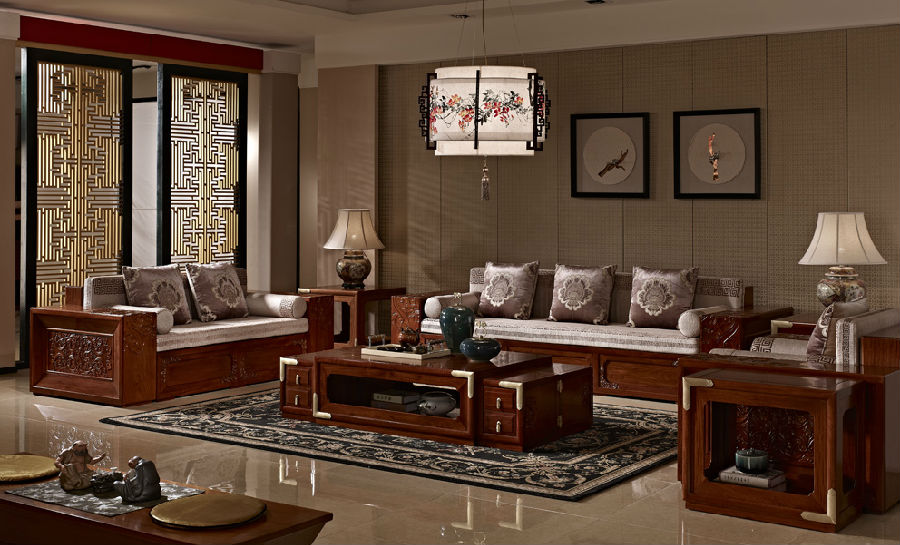
(i) Chinese furniture is famous for its carvings, especially the patterns of text, palindrome, full scroll, trapezoid, phoenix claw, cat foot and geometric shapes.
(ii) Chinese furniture is mainly made of precious wood, and the decoration is mostly carved lacquer, inlay and attachment; direct painting, line drawing and inverted ridges are the most common.
(iii) Chairs have low backrests and armrests, and the four legs are mostly oval, straight and thin. The seat cushions are decorated with fabric or leather cushions, and the key is bright, clear, eye-catching and magnificent.
(iv) Chairs are more common in the full flat carved lotus style, three-screen style, cloud dragon round back style, round chair style, five-screen style and cross-legged chair style. In addition, there are sedan chairs, imperial chairs, lamp-hanging chairs, official hat chairs and show stools.
American furniture

Any furniture made between 1608 and 1830 is considered early American or colonial. During the American colonial period, forests were everywhere, and wood was readily available for building houses and furniture. At that time, sturdy and practical furniture was made with hand tools for storage, dining, sitting and lying. The wood used was all locally produced oak, pine and maple. Furniture was assembled with wooden nails instead of iron nails. The legs of furniture were mostly made by cutting. Later, colonists from various European countries brought their best furniture with them. Influenced by designers from France, Britain and other countries, colonial furniture gradually became more ornate. Heavy furniture was gradually replaced by lighter and more practical styles. Early American furniture was mainly made of maple, birch and a few pine trees. The popular painting method was tea brown or light honey maple color.
The most commonly used wood for traditional American furniture is mahogany, and the painting is mostly dark red or brown. The American concept of comfortable life is what they demand from furniture. Therefore, American furniture shows a rough, unprocessed texture in terms of materials and colors. Free combination to meet various needs is also the focus of American furniture. Influenced by traditional Mexican handicrafts, the indigenous totems mixed with various straw weavings and the heavy wood color make American furniture very popular among Chinese people. The use of woven fabrics makes American spaces more distinctive. Woven fabrics are more common than raw fabrics. Whether the colors are lively and bright or warm and elegant, they can all be manifestations of American style.
Modern furniture
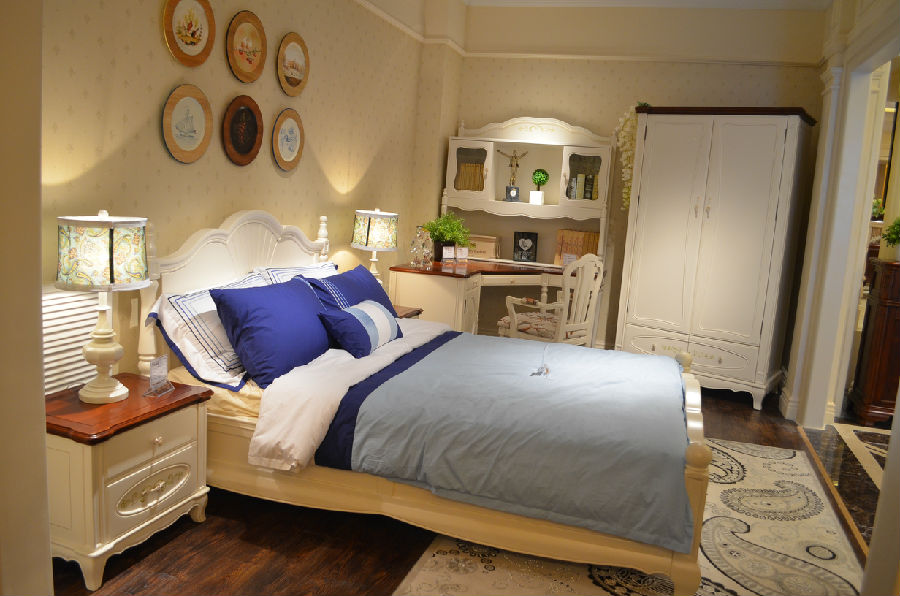
Modern furniture: It is a system furniture that can be combined at will. It usually uses imported panels and is processed domestically. It is fireproof and wear-resistant. The color can be customized according to your own preferences. It is practical, beautiful and cheaper than imported furniture, which is more in line with DIY requirements.
French furniture

French furniture is the most common type of furniture with beautiful lines, and it originated from France in Europe. French furniture has a strong aristocratic court color and is rich in artistic atmosphere. It emphasizes hand-carved and elegant retro style. For example, French antique furniture is mainly made of mahogany, and is completely hand-carved. The color is mainly made of walnut and logs. It retains the elegant shape and delicate lines, giving the furniture a more rustic flavor. Another feature of French furniture is the small black scratches on the surface of the material, which are so-called antique paint. Such scratches are specially made to imitate ancient furniture. To decorate a home with French style, you must first be a master of color matching, because French homes are only known for their plain, simple and even rustic colors. The French, who love cleanliness, tend to use bright colors in furniture, among which beige, yellow, white and log colors are the most common. Some people call French furniture sentimental furniture (compared to the rational Italian furniture). That's because French furniture completely conforms to the aesthetic style. For example, a tasseled blanket is placed on the sofa, which is like using furniture as clothing. French furniture is as beautiful as clothing.
Italian furniture
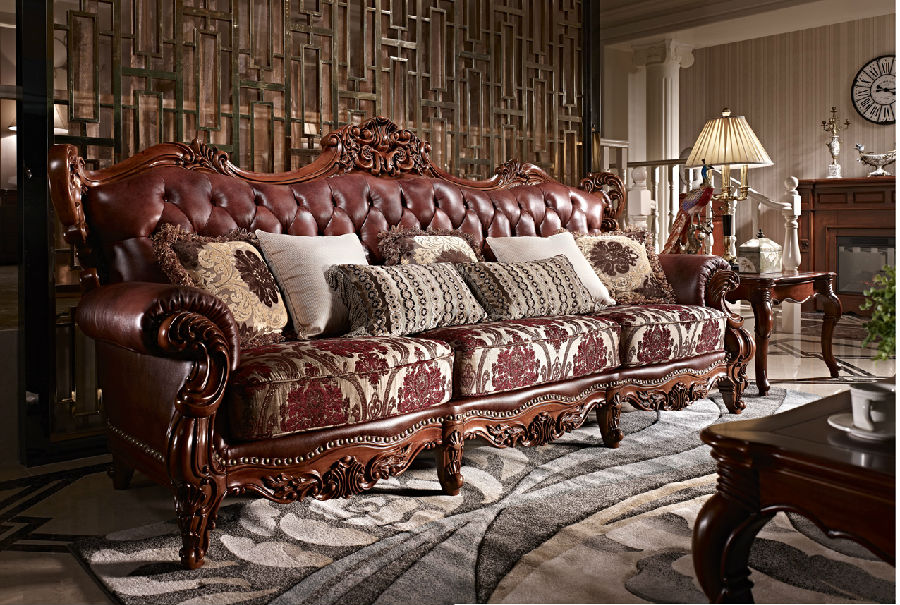
Italian furniture imitates the gorgeous furniture of Rome and other big cities at that time, simplifies its design and reduces some decorations. One of the characteristics of Italian style is the use of straight lines. Common woods are cherry or walnut, which are often painted light brown. Modern Italian furniture likes the magnificent European style metal copper series furniture and home decorations, such as pure copper beds and copper furniture. Recently, rattan beds are popular in Italy. It is ergonomic and rational, and the requirements of Milan, a major industrial design center, for furniture quality make Italian furniture displayed as high-end goods in countries around the world. Italian furniture's attention to fine edge stitching and leather products can be seen at a glance. The environmental protection trend in recent years has also affected the style of Italian furniture. In the past, the strong metallic feel and the overly rational and cold taste will return to the original nature at the end of the century to form warm furniture. For example, the geometric exaggerated lines are replaced with rounded and restrained arcs, which are the future trends of Italian furniture. Italy is the birthplace of the Renaissance movement and the hotbed for the creation of Renaissance furniture. At the end of the 15th century, Italian furniture art absorbed the essence of ancient shapes.
Italy is also the birthplace of the Baroque style. The Baroque decorative patterns it created are engraved on the furniture in the palace, which are decorated with mythological nude statues, lions, eagles, and spiral patterns, clam shapes and other comprehensive patterns, and are painted and gilded. The entire interior looks magnificent and luxurious. This court Baroque style centered on Rome developed to its peak in the 1750s. In the second half of the 17th century, Italian Baroque furniture was produced in the northern region. Most of these furniture are made with sophisticated techniques and good structural forms, showing extremely strong characteristics.
Nordic furniture
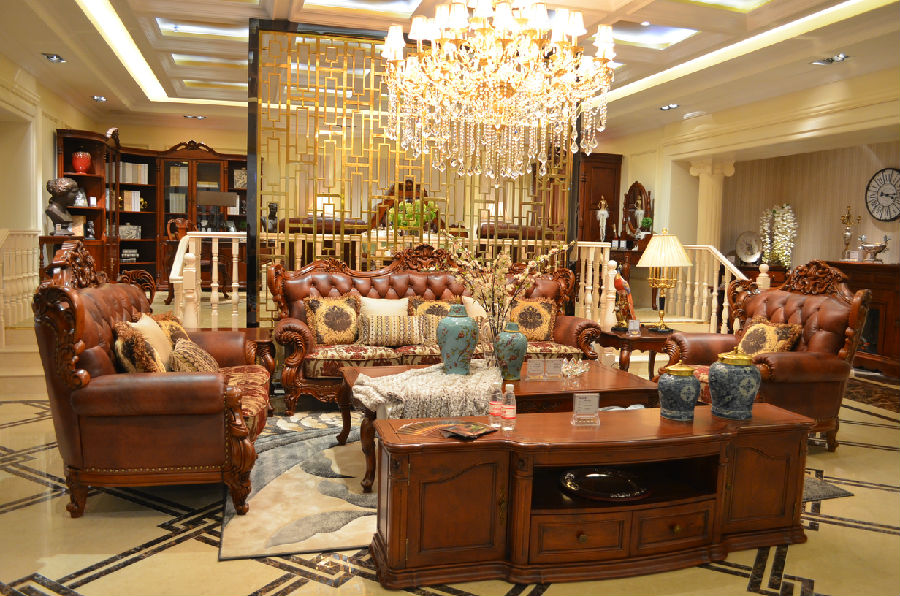
Humanistic life consciousness and high-quality furniture materials make Nordic furniture highly praised by people with taste. Since IKEA and IDEA, two Nordic furniture brands, entered Taiwan, the former is from Sweden and the latter is from Denmark, the concept of Nordic furniture has been particularly deep in the hearts of Taiwanese people. Emphasis on creating a home with warm colors is the key style of Nordic furniture, so beech, woven fabrics, mottled pottery, and straw are the main materials. In addition, there are special woods for furniture in the Nordic forests. With natural resources not in short supply, Nordic furniture presents a diverse and environmentally friendly concept.
(I) Nordic countries include Denmark, Finland, Norway, Sweden, etc., mainly the Scandinavian Peninsula.
(2) In the Middle Ages, Nordic furniture mainly adopted the flat carved pointed arches and animal decorations of the early Gothic style. In the 16th century, due to the influence of the Netherlands and Germany, frames and carved panel structures were mostly used. In the Renaissance, it was manifested in half-columns and interlaced ear-shaped decorations. In the 18th century, Nordic furniture progressed from Baroque style to Rococo style. The development of Rococo furniture was more rigorous. In terms of design style, it was known for its plain lines and simplicity. Its appearance was solemn and full of elegance. Its original design was rooted in the shape of British furniture. This tendency is undoubtedly a strong expression of the Nordic national character's preference for practicality and neglect of pretense, and it also laid a good foundation for the glorious achievements of Nordic furniture in the future.

(III) The main features of Nordic furniture are based on its organic shape and light feeling on the one hand, and on its beautiful material and sophisticated craftsmanship on the other. Nordic designers deeply understand that "mature shape is the most perfect form", so they use round and natural organic shape with abstract sculpture feeling as the main basis for furniture shape. At the same time, Nordic designers believe that "maximizing the characteristics of materials is the first treatment of any perfect design", so they use clever techniques to seek the most perfect combination and expression from the special texture of all furniture materials such as wood, rattan, textiles, metal, etc., and give people a very natural, rich, comfortable and friendly visual and tactile feeling.
(IV) The special achievements of Nordic furniture in the 20th century have brought fruitful contributions and inspiration to modern furniture, which has infinite significance and value.
(5) The Nordic modern furniture style has shown obvious signs and facts of transformation. If Nordic designers can continue to grasp their own unique cultivation and characteristics and inject them into modern civilization, they will be able to further integrate emotion and reason into one, and combine art and science into a new style that is more suitable for human needs.
Southern European furniture

(I) Southern European furniture is mainly from Italy, Spain, Greece, and Portugal. Because they are all Latin ethnic groups and share the same environment, the furniture of Southern European countries has its common characteristics.
(II) The history of Western furniture can be traced back to the primitive period. Before the Christian era, the ancient Egyptian style was the main object of study. The shape was rough and the structure was simple. At the beginning of the century, Roman furniture was a major feature. The style adopted a very rigorous rectangular structure and copper was also used. The main imitation of natural objects was the shape. Medieval furniture was characterized by imitation of Roman and Byzantine styles. In the 14th century, the so-called Gothic style entered. The shape lacked novelty and still imitated the simple and rigid shape of the Middle Ages. The style of the Renaissance in the 15th century originated from the simple shape of ancient times. In the 17th century, the glorious Baroque style entered. The materials used curves and the shape design was based on the spirit of romanticism. It also used anti-classicism to express the lyrical effect of dynamics. In the 18th century, the Rococo style emerged. The shape was characterized by curves such as rocks and clam shells. At the end of the 18th century, the neoclassical style became popular again. In the 19th century, there was a period of confusion among various styles. There was no definite style or special shape. In the 20th century, modern furniture took simple streamline as the theme in shape and emphasized functionalism.
(III) Greek and Latin culture, also known as classical culture, and Christian culture are the two major mainstreams of European culture. In the sixth century BC, furniture in southern Europe all adopted a solemn rectangular structure, and used spiral column decorations, palm leaf flower decorations and other plant decorations in decoration. The use and decoration of copper materials were also the most remarkable achievements at that time. In the ancient city of Pompeii in Italy, a rich amount of copper furniture and parts were excavated. Roman architecture is a rare achievement in the world. The current world architectural history originated from ancient Rome. The golden ratio used in the architectural and furniture industries was created by the Romans. In the fourth and fifth centuries BC, the Germanic peoples invaded, and the Western Roman culture suffered an unprecedented catastrophe, and the design style also underwent a strong change. As a result of the collapse of the Western Roman Empire, Roman culture migrated eastward, which led to the culture of the Eastern Roman Empire. Later, it was inherited by the Byzantine Empire culture. The decorative furniture of the Byzantine Empire inherited the late Greek style in basic form. Due to the influence of the luxurious lifestyle at that time, the furniture decoration was more beautiful, and woodworking and ivory carving decoration developed into the characteristics of decorative furniture. It developed in Italy and Western Europe between the Romanesque and Gothic periods. The Romanesque style furniture is mainly decorated with animal heads and claws. Its main feature is simplicity.
(IV) The characteristics of Spanish and Portuguese furniture are the use of leather treated with embossing, carving, dyeing, and gilding as furniture decoration.
English furniture
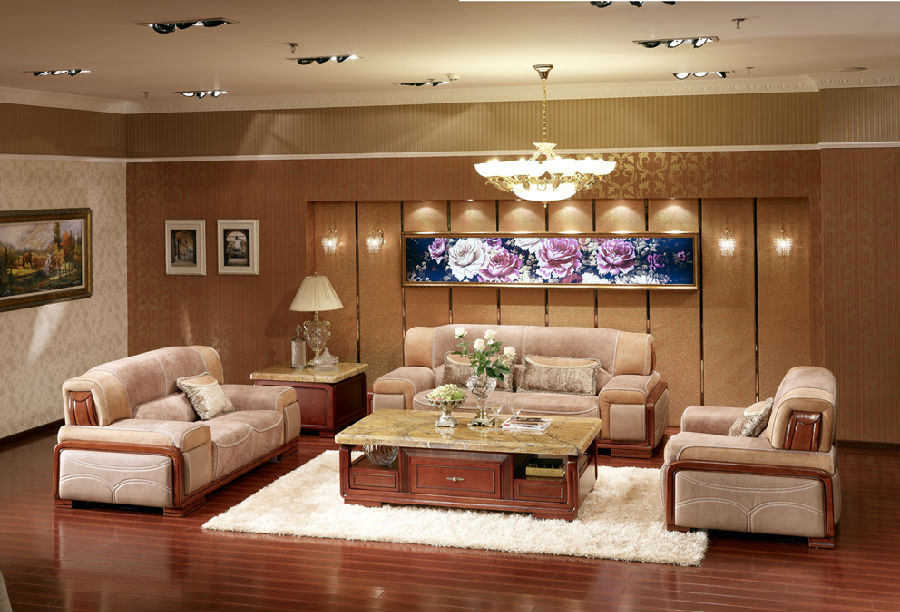
Early British furniture was beautiful, elegant and harmonious. Mahogany with decorative strips and carvings was preferred. British furniture gives people a more calm and elegant feeling. If it is added with wooden embedded patterns, it will have a more classical charm. For example, British beds prefer carved wooden patterns. Pastoral style is the impression of British homes by most people. From the flower and grass accessories of afternoon tea to the influence of modern architecture, British furniture has actually undergone revolutionary changes. It is no longer dominated by feminine beauty. Instead, high-tech, sturdy and practical steel furniture has risen from the alternative and formed a powerful force. In recent years, British furniture has clearly presented a "futuristic" style, such as lamps and tables dominated by metallic colors. All personalized products with a cosmic luster are the selling points of British furniture.
(i) Early British furniture was mainly made of oak. In the Gothic furniture period of the 15th century, it was a special serious and simple style. It adopts a frame panel structure and typical window window decorations and folded linen decorations.
(ii) Decorative furniture in Britain developed slowly. When the furniture style in Paris and other places had already turned from the heyday of the Renaissance to the late Renaissance, this style was introduced to Britain and became popular. It was not until the time of Queen Elizabeth that British furniture art took a new path.
(iii) Walnut began to replace oak in the mid-seventeenth century. Walnut is easy to carve, so it is more refined and advanced than earlier furniture. At this time, British Renaissance furniture was coming to an end and entered the Baroque period, resulting in two very significant changes. On the one hand, the rough Jacobean oak flat-carved furniture in the countryside was replaced by pure walnut furniture. On the other hand, the royal palace and the nobility were influenced by Italian and French court decorations and adopted extremely luxurious decorative styles. At the end of the 17th century, Britain abandoned this trend and focused on the development of local walnut furniture, which was simple and elegant in appearance. Moreover, because the British people attached great importance to practicality, they were also very successful in the design and production of practical furniture. The British furniture of this period was made of walnut, so it was called the "Walnut Period".
